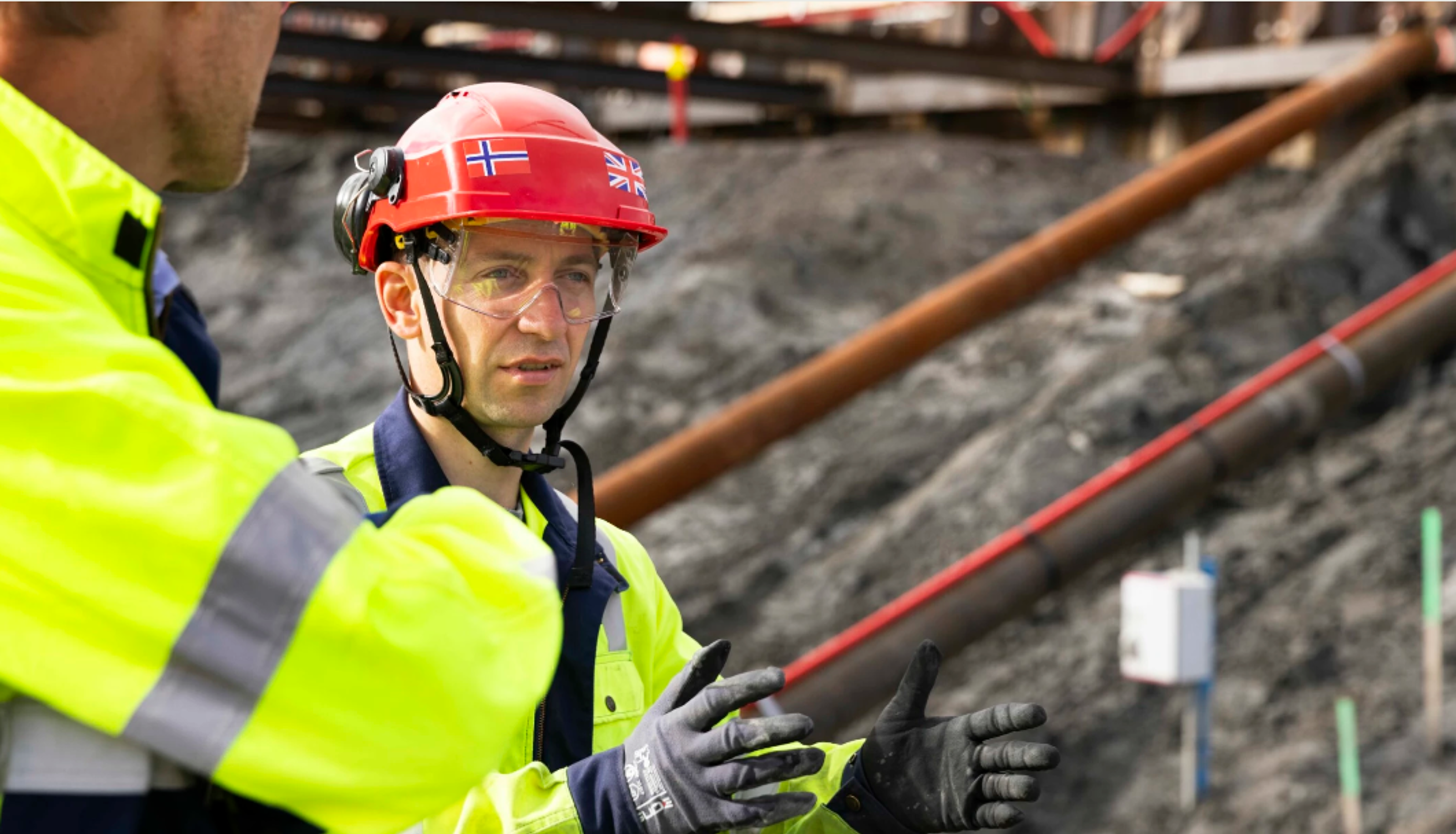Build a new headquarter on quick clay would make many worried. But not NGI
The Norwegian Geotechnical Institute (NGI) uses the construction process to develop new ways of designing and building.

NGI's research project at Campus Ullevål will provide knowledge about more sustainable construction in challenging ground conditions. - The construction industry has an important role in working towards a more sustainable society, says Einar John Lande at NGI. ( Mari Svenningsen)
The construction of Campus Ullevål provides the opportunity to research and develop new, better, and more sustainable construction methods. Even where ground conditions are difficult.
Campus Ullevål will be ready for occupation in mid-2026. It will be part of the Oslo Science City Innovation District.
The building is not only to be built on a ground that contains quick clay. Commercial and residential buildings, and also the major highway in Oslo, Ring 3, surround the construction pit.
Densification and quick clay
Urban areas need to be densified and at the same time quick clay in the ground. This combination is found in many Norwegian cities and towns. For example, both Oslo and Trondheim have large areas of quick clay.
- The construction industry has an important role in the work towards a more sustainable society and to achieve the climate goals. We aim to contribute to more sustainable construction in challenging ground conditions in the future, says Einar John Lande.
He is head of the section for onshore foundations at NGI. He also leads the CURIOUS project. It is an acronym for "Campus Ullevål: Research and Instrumentation Of Underground Structures".
Lande explains that by combining the construction of Campus Ullevål with research, NGI will develop solutions to reduce both costs, time consumption, and greenhouse gas emissions.
How to design the foundation?
For the construction industry, it can be considered luck that the ground conditions under NGI's new headquarters are demanding. Here, the huge construction pit will be excavated down to vast deposits of quick clay.
This marine clay is left over from the ice age and the great ice cap that covered a significant part of the Northern Hemisphere more than 10,000 years ago. If it is at rest, quick clay is stable and harmless. But if quick clay is overloaded, it can become unstable. Then the ground changes from a stable cover to a thin soup.
When excavating for a basement in quick clay, the building pit must be secured with a support structure – a steel sheet pile wall. To ensure safety during construction work and to avoid damage to neighboring buildings, it is also necessary to stiffen the support structure. In addition, the quick clay must be reinforced with lime-cement stabilization.
Steel in the support structures and binders in quick clay reinforcement leads to significant greenhouse gas emissions. Therefore, the researchers will find out how it is possible to reduce the need for resources and thus the climate footprint.
- NGI has one of the world's foremost knowledge environments on quick clay, says Lande.
The building pit's digital twin
A comprehensive instrumentation and monitoring program for the foundation works has been established. It will form part of the basis for developing new recommendations for designing and building deep construction pits in soft clay.
As part of the work, a digital copy, a so-called digital twin, of the construction pit will be developed. Here, measurement data in real-time can be used to automatically update the models and make the execution of the work the best possible.
As part of the monitoring program, life cycle analyses of the foundation works must be carried out. The analyses must document the impact of the foundation works. Therefore, real figures are collected on greenhouse gas emissions from the foundation works.
The direct greenhouse gas emissions from energy use in building and construction activities are estimated at around 4.5 percent of the emissions in Norway. To achieve the goal that greenhouse gas emissions in Norway must be reduced by 55 percent by 2030 compared to 1990, emissions from building and construction activities must also be reduced significantly.
- There is an unfulfilled potential in optimizing foundation work to a greater extent than what we do with current practice. With increased knowledge and the correct use of advanced instrumentation and digital tools, we can reduce resource use and thus also costs, time, and greenhouse gas emissions, says Einar John Lande.

Einar John Lande
Lead Geotechnical Engineer Onshore foundations einar.john.lande@ngi.no+47 456 19 397